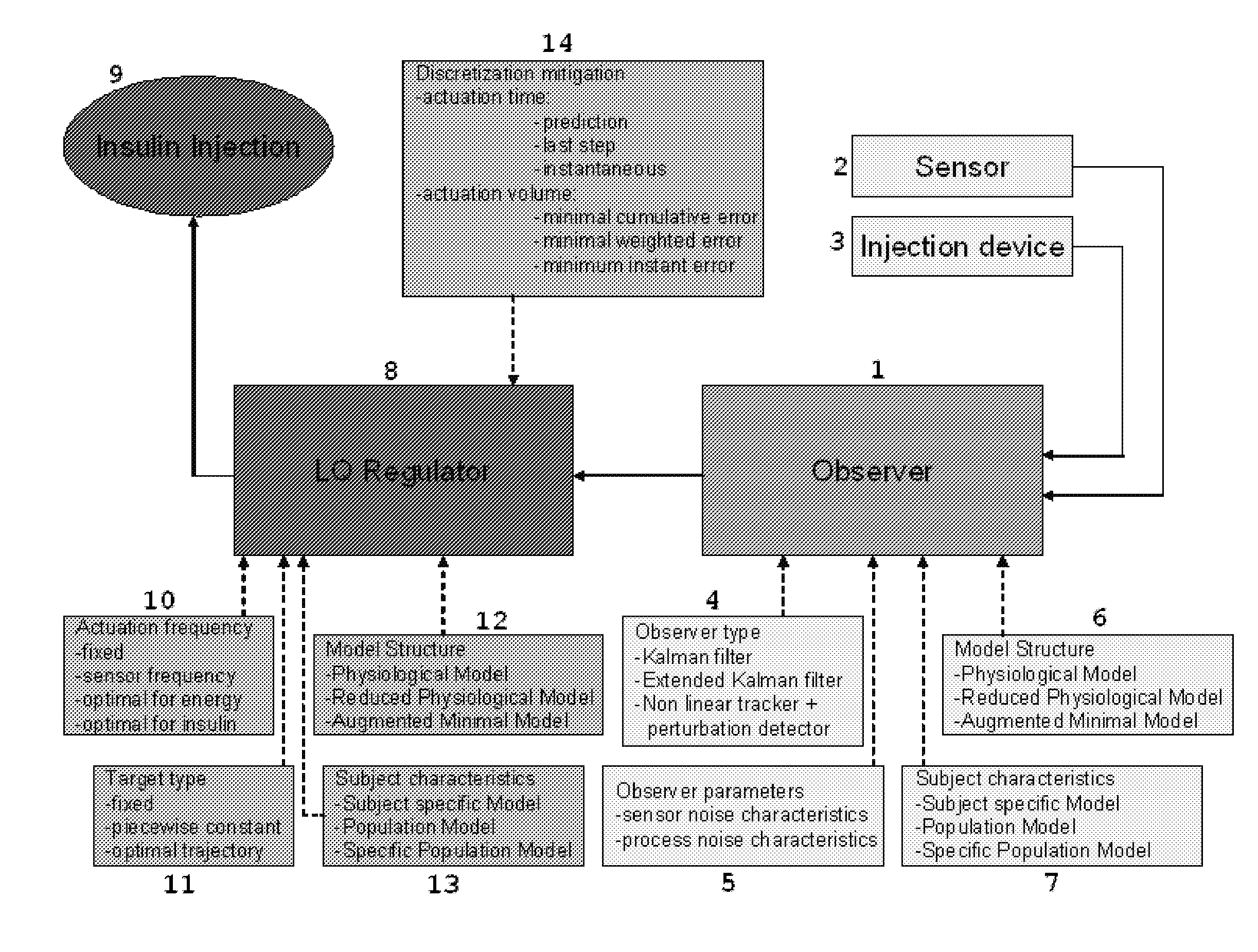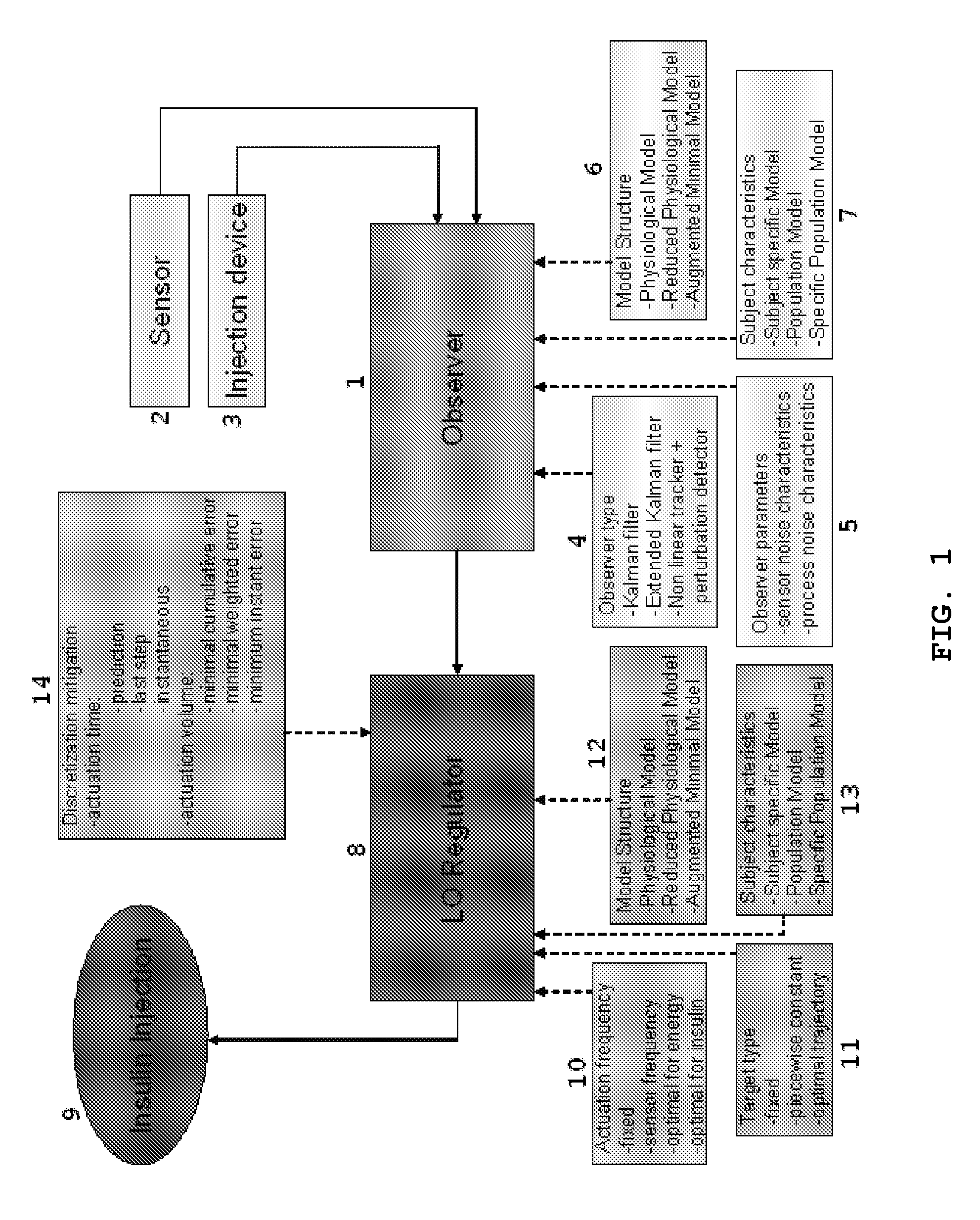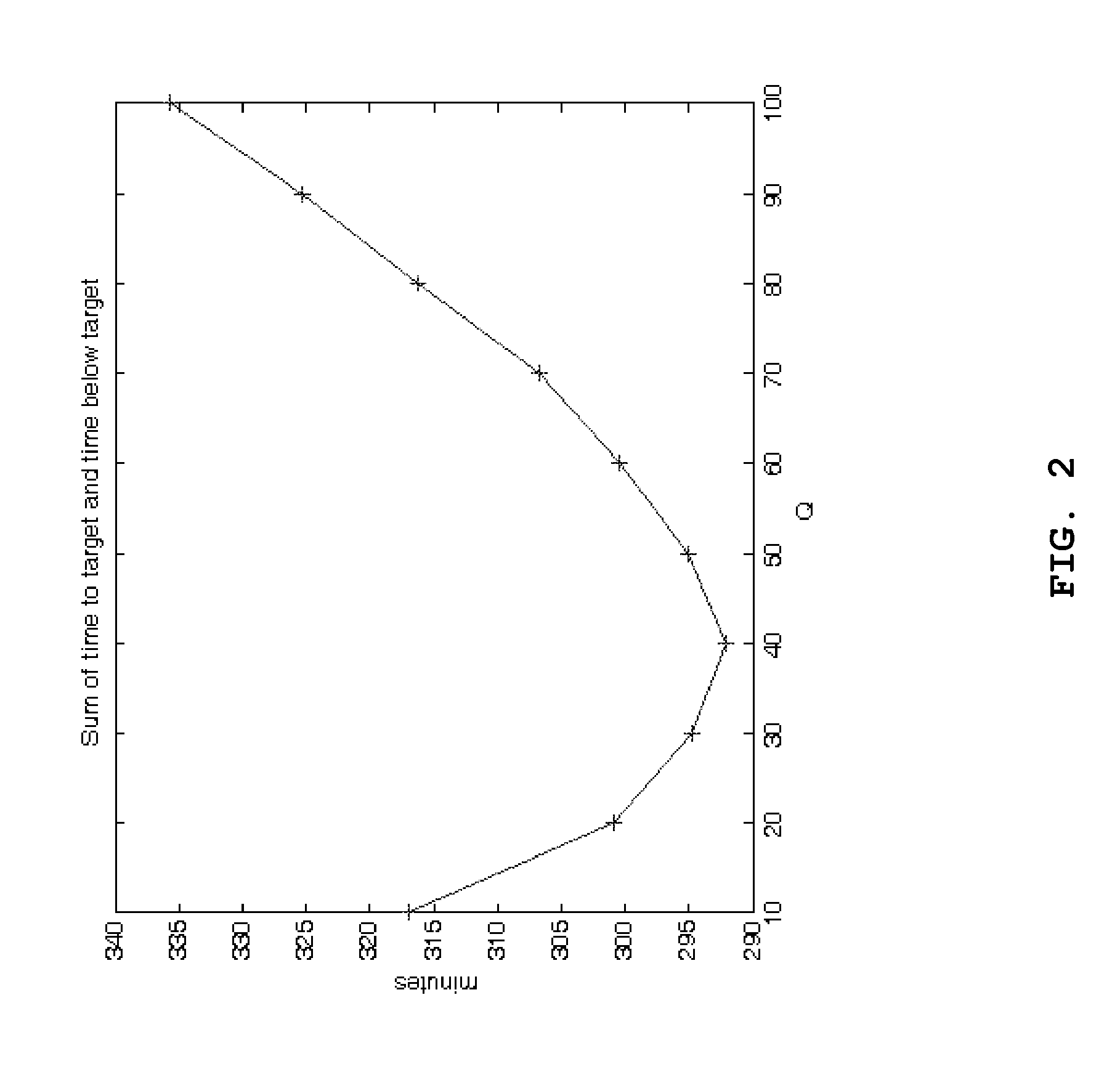LQG Artificial Pancreas Control System and Related Method
a control system and artificial pancreas technology, applied in the field of artificial pancreas control system and related methods, can solve the problems of poor glucose control, predictive model, and computationally more demanding predictive control (mpc) than predictive model, and achieve the effect of minimizing the quadratic cost function
- Summary
- Abstract
- Description
- Claims
- Application Information
AI Technical Summary
Benefits of technology
Problems solved by technology
Method used
Image
Examples
Embodiment Construction
[0069]The present invention may be understood more readily by reference to the following detailed description of preferred embodiments of the invention as well as to the examples included therein.
[0070]All numeric values are herein assumed to be modified by the term “about,” whether or not explicitly indicated. The term “about” generally refers to a range of numbers that one of skill in the art would consider equivalent to the recited value (i.e., having the same function or result). In many instances, the term “about” may include numbers that are rounded to the nearest significant figure.
[0071]In LQG control, an actuation signal is computed to minimize squared-error deviations from a nominal operating point, which in this case corresponds to tight glycemic control around a reference glucose concentration of 100 mg / dl. The feedback control law is derived from a linearized model of the system dynamics, which is assumed to be perturbed by Gaussian white noise disturbances and measurem...
PUM
 Login to View More
Login to View More Abstract
Description
Claims
Application Information
 Login to View More
Login to View More - R&D
- Intellectual Property
- Life Sciences
- Materials
- Tech Scout
- Unparalleled Data Quality
- Higher Quality Content
- 60% Fewer Hallucinations
Browse by: Latest US Patents, China's latest patents, Technical Efficacy Thesaurus, Application Domain, Technology Topic, Popular Technical Reports.
© 2025 PatSnap. All rights reserved.Legal|Privacy policy|Modern Slavery Act Transparency Statement|Sitemap|About US| Contact US: help@patsnap.com



